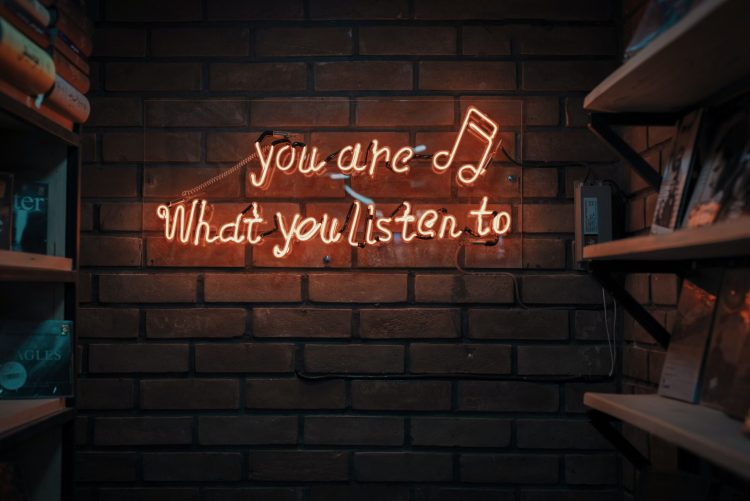Podcasts are to radio what streaming is to television. Content is similar, but people get theirs through apps or the internet. There are podcasts out there for everything, from celebrity shows to bizarre conspiracy theories (and of course, for the game of bridge). Here’s what you should know about the busy world of bridge podcasts, and what you’re going to need if you want to create your own.
So you want to start a podcast

So you want to start a podcast
The Great Bridge Podcast Guide
By Alex J. Coyne © 2022 Great Bridge Links
If you’d like to switch to a spectator’s seat and just sit back to enjoy someone else’s bridge game, bridge podcasts are a very popular way to do it!
Podcasts are to radio what streaming is to television. Content is similar, but people get theirs through apps or the internet. There are podcasts out there for everything, from celebrity shows to bizarre conspiracy theories (and of course, for the game of bridge).
Here’s what you should know about the busy world of bridge podcasts, and what you’re going to need if you want to create your own.
Officially, What’s a Podcast?
Podcasts are a type of audio-based content, and might cover any angle, argument or topic that you can imagine could be downloaded or streamed. Bridge and poker podcasts are extremely popular, but there are podcasts that feature everything from ghosts stories to celebrity interviews.
Most podcasts are pre-recorded and uploaded to platforms for download, but live streams are also popular for broadcasters who have the resources (and the nerve).
The average length of podcasts can vary. A podcast might be anything from 10 to 45 minutes long, though shows exist that increase this length to more than an hour.
If you are an aspiring podcast creator, remember that a podcast’s length should never be more than what you have time to produce and edit – and the ideal podcast hits the listener’s sweet spot for how much time they have in their day to listen.
Record & Edit: DAW (Digital Audio Workstation)
Recording and creating a podcast is easier than it sounds. Thanks to the availability of the internet and the power most people have in a single computer or smart device, you can create a high-quality podcast people will want to listen to from anywhere in the world.
• Invest in quality microphones and headphones.
• Limit atmospheric noise when recording.
• Use stock libraries for audio additions and special effects, if any.
• Get a decent Digital Audio Workstation.
• Create, enjoy and upload.
Once you put a podcast out there, you are officially a creator of content.
With great content, comes great responsibility. Make sure that your content is something people will want to listen to! If you have trouble coming up with your first ideas, think of the type of thing you would like to listen to or know about and do research on who else, before you, has covered it.
What the deuce is a Digital Audio Workstation?
Well, it’s the type of audio software that lets you enhance, alter and edit sound recordings. There are hundreds of options, but most of the advanced features (and more expensive software) isn’t necessary if you want to create and release a podcast.
Audacity, Adobe Audition and Garageband are three DAW software recommendations you’ll see often. All three are great, but each have advantages and disadvantages. Newcomers are encouraged to watch at least a few tutorial YouTube videos before picking their software.
Mess around with the software a little and you will eventually, gradually develop a feel for how to edit audio together better. Again, tutorials are your saving grace if you are any kind of self-taught audio editor.
There’s one more thing… Always backup your initial recordings, and separately from where you intend to edit. It’s much more comforting to screw up a duplicate file than to realize you just made an irreversible change to the original (and yes, this happens).
Suggested Stock Platforms
Let’s talk about stock, and not the kind that gets boiled down from vegetables or meat. Stock footage and audio are files that fall under specific copyright laws, and usually work in such a way that they can be featured in content royalty-free.
Sure, it’s great to end or start your podcast with Highway to Hell… But copyright laws and content creation is a complicated and sometimes expensive disaster that most content creators on the internet don’t even want to begin trifling with
For music and sound effects to include in your podcast, stock libraries are your best bet. The same is true for any images that you might want to feature, perhaps as a cover image for an episode.
Excellent suggested stock libraries include Envato Elements, Adobe Stock (https://stock.adobe.com/), Clipchamp (https://clipchamp.com/collections/audio) and 123RF (https://123rf.com/stock-audio).
Have fun!
Podcast Platforms
What do you do with a podcast once you’re sure you’ve made a great one?
One of the first few steps is to find a suitable podcast platform to upload it. Once live, your podcast episode or show can be promoted any way you wish – but first, you have to find a place to put it.
There are many podcast platforms, and you can already find some excellent bridge-related podcasts on some of these websites.
Here are 6 popular podcast platforms that can get your bridge podcast international reach.
1. Anchor.FM
2. acast.com
3. BuzzSprout
4. Google Podcasts
5. Player.FM
6. Podbean
7. SoundCloud
8. TuneIn
Apple.com
Many of you might want to get their podcasts on Apple and you’re in luck! BuzzSprout has written this excellent step-by-step on how to accomplish this. How to Get Your Podcast Into Apple Podcasts and iTunes →
Some Bridge Podcasts
It’s a good idea to listen to some bridge-related podcasts to see what’s on offer before getting yours started Here are two that are currently available:
Sorry, Partner, a weekly podcast about bridge and all things interesting to bridge players, brought to you by bridge partners and friends, Catherine Harris and Jocelyn Startz. They’ll be chatting with international bridge luminaries and up-and-coming stars, and sharing stories from around the world about this game we all love.
The Setting Trick – conversations with world class bridge players. View full list on acbl.org here →
You can find more Bridge Podcasts in our article The Best Bridge Podcasts →
PHOTO Credit: Photo by Mohammad Metri on Unsplash








